Analysis of virtual culture in social networks as a digital organization
Keywords:
bureaucracy, communication, culture, organization, social networks, socialAbstract
Nowadays, many individuals spend a significant part of their lives communicating via organizations and social networks. There are many distinct groups that boast social significance within these platforms and each of these has it owns characteristics and plays a unique role in our social reality. Organizations, for example, are defined as large groups of individuals brought together under a common goal which they want to achieve efficiently. Related to organizations emerges bureaucracy. There are six key pillars that define an ideal bureaucracy within an organization: specialization; hierarchy; rules and norms; technical competence; impersonality and formal communications.
This qualitative research investigated whether, social networks can be defined as organizations in the strictest terms due to the digital culture that characterizes them. However, our findings were negative due to structural differences. Although organization require a coordinated effort from a number of individuals, like social networks, once the staff was established, it can change but the organization remains intact. On the other hand, when the members of a social network mutate, the objective of that network is modified. Thus, we can conclude that although social networks have certain forms of bureaucracy derived from the rules of use, they are not as complex as the bureaucracy found in an organization.
Downloads
References
Ainz, G. A. y Rodríguez, P. R. (2019). Redes sociales y dinámicas de grupos. TEXD.
Arroyo, N. (2007). ¿Web 2.0? ¿web social? ¿qué es eso Revista Educación y biblioteca, 161, 69-74.
Belli, S. y Aceros, J.C. (2020). La confianza distribuida en las redes : un estudio de caso en el ámbito de los movimientos sociales.
Redes : revista hispana para el análisis de redes sociales, 31 (1), 46-56.
Borges, C. (2019, 16 de agosto). Cultura digital: ¿cuáles son sus características e influencias en la sociedad? Rockcontent. https://bit.ly/2O6g0Qs
Boyd, D. M. y Ellison, N. B. (2007). Social Network Sites: Definition, History, and Scholarship. Journal of Computer-Mediated Communication 13(1), 210-230.
Calhoun, C., Light, D. y Keller, S. (2000). Sociología. McGraw Hill.
Castells, M. (2002, 10 de abril). La dimensión cultural de Internet. Debates culturales de la UOC. https://bit.ly/2BDY7Gi
Castells, M. (2003). La Galaxia Internet. Reflexiones sobre Internet, empresa y sociedad. DeBolsillo.
Christakis, N. A. y Fowler, J. H. (2010). Conectados. Taurus.
Dholakia, U.M., Bagozzi, R.P. y Klein, L. (2004). A social influence model of consumer participation in network- and small-group-based virtual communities. International Journal of Research in Marketing, 2, 241-263.
Díaz, M. N. y Extremera, P. N. (2020). Inteligencia emocional, adicción al Smartphone y malestar psicológico como predictores de la nomofobia en adolescentes. Know and share psychology, 1(2), 7-13 DOI: http://dx.doi.org/10.25115/kasp.v1i2.3195
Digital. (2019, 15 de julio) Todos los datos y tendencias que necesitas para entender los comportamientos en Internet, redes sociales, móvil y comercio electrónico en 2019. We are social y Hootsuit. https://bit.ly/2Z8sOw5
Doise, W., Deschamps, J.C. y Mugny, G. (1980). Psicología social experimental. Hispano Europea.
Dunbar, R.I.M. (1992). Neocortex size as a constraint on group size in primates. Journal of Human Evolution, 20, 469-493.
Falconí, J.M.G., Levoyer, E. N. A. y Maldonado, E. A. (2019). Construcción de una autoestima saludable durante la adolescencia en la era digital [tesis doctoral, Universidad San Francisco de Quito, Ecuador]. Repositorio Digital USFQ. https://bit.ly/38ADBCn
Gabelas, J.A., Lazo, C.M. y Aranda, D. (2012). Por qué las TRIC y no las TIC. Revista de los estudios de la información y de la comunicación, 9. https://bit.ly/3gCfupz
Gadamer, H. G. (1990). Wahrheit und Methode. Grundzüge einer philosophischen Hermeneutik. Siebeck.
Garzón, M. (2020). Las comunidades de prácticas en las organizaciones. Desarrollo gerencial, 12(1). DOI: https://doi.org/10.17081/dege...3683
Gelles, R. J. y Levine, A. (2000). Sociología con aplicaciones en países de habla hispana. McGraw Hill.
González, J., León, A., Pérez, C. y Calvete, E. (2017). Adaptación al español del cuestionario Nomophobia Questionnaire (NMP-Q) en una muestra de adolescentes. Actas Españolas de Psiquiatría, 45(4), 137-44.
Guerrero, B. E., Sánchez, H. S., Moreno, M. J.M., Sosa, B. D. y Durán, V. M.A. (2019). El autoconcepto y su relación con la inteligencia emocional y la ansiedad. Psicología Conductual, 27(3), 455-476.
Hernández, V. (2019). Los efectos de los medios de comunicación de masas. Editorial UOC.
Hogg, M. (2020). Teoría de la identidad social. Ed. Universidad de Buenos Aires.
Hyman, H. (1942). The Psychology of status. Archives of Psychology, 37, 14-39.
INTECO. (2009). Estudio sobre la privacidad de los datos personales y la seguridad de la información en las redes sociales online. (Nº 559). https://bit.ly/2O2T2K1
Janis, K.L. (1971). Groupthink. Psychology Today, 5, 43-46 y 74-76.
Janis, K.L. (1972). Victims of Groupthink. Houghton Mifflin.
Jenkins, H. (2006). Convergence Culture. La cultura de la convergencia de los medios de comunicación. Paidós.
Kolbitsch, J. y Maurer, H. (2006). The transformation of the Web: How emerging communities shape the information we consume. Journal of Universal Computer Science, 12(2), 187-213.
Le Bon, G. (1895). Psychologue des Foules Trad. The Crowd: a study of the Popular Mind. Ernest Benn.
Le Bon, G. (2000). Psicología de las masas. Morata. (Original publicado en 1895).
Macionis, J. J. y Plummer, K. (2011). Sociología. Pearson Educación.
Mannheim, K. (1995). Ideologie and Utopie. Vittorio Klostermann.
Marín, A. L. (2011). Sociología. El estudio de la realidad social. Ediciones Universidad de Pamplona.
Mateos, V. (2019). Estética filosófica y alfabetización fotográfica. Materiales didácticos y análisis de experiencia didáctica en Bachillerato. Revista Prisma Social, 25, 41-65.
Mendoza, N. (2018). Las Redes Sociales en el marco del ciberespacio. Consumidores, comercio electrónico y propiedad intelectual a la luz del caso cubano. Culturas, revista de gestión cultural, 5(1), 53-71 DOI: https://doi.org/10.4995/cs.2018.9967
Merton, R. K. (1968). Social theory and social structure. Nueva York. Free Press Org. En Macionis, J. J., y Plummer, K. Sociología (p.152). Madrid: Pearson Educación.
Miño, R., Rivera, P. y Alonso, C. (2019). Comunidades virtuales: dinámicas emergentes de participación social y aprendizaje entre los jóvenes. Education in the knowledge Society, 20. DOI: http://dx.doi.org/10.14201/eks2019_20_a21
Mitchell, J. C. (1969). Social networks in urban situations. Analysis of personal relationships in Central African towns. Manchester: Institute for African Studies University of Zambia.
Montero, M. y Hotchman, E. (2019, 5 de noviembre). Esquema general del proceso de investigación documental. MetodologíaECS. https://bit.ly/37JQl80
Moreno, M. (2019). (2019, 18 de julio). Las 18 redes sociales más usadas en el mundo. Trece bits. https://bit.ly/2O5oS8V
Nünning, V. y Nünning, A. (2010). Methoden der literatur- und kulturwissenschaftlichen Textanalyse. Verlag J. B. Metzler.
Real Academia Española. (2020) Diccionario del Español Jurídico diccionario online (23 ed. De la RAE). https://bit.ly/2FyIPAX
Ortiz, M. (2016). Metodología y técnica hermenéutica. Plantu.
Pérez, J.E., Valerio, G. y Rodríguez, L. (2016). Análisis de redes sociales para el estudio de la producción intelectual de grupos de investigación. Perfiles educativos 37(150), 39-45.
Postmes, T., Spears, R. y Lea, M. (2000). The formation of group norms in computer-mediated communication. Human Communication Research, 26(3), 341-371.
Raffino, M.E. (2020, 10 de junio). Concepto de Organización. Concepto.de. https://bit.ly/35xa1KY
Rheingold, H. (1993). The virtual community. Homesteading on the Electronic Frontier. Perseus Book.
Ridgeway, C. (1983). The Dynamics of small groups. San Martin´s Press.
Robles, J.M. (2019). El reto de la participación. Movimiento sociales y organizaciones. Machado libros.
Russell, B. (2009). La conquista de la felicidad. Debolsillo.
Salinas, J. y Marín, V. I., (2019). Metasíntesis cualitativa sobre colaboración científica e identidad digital académica en redes sociales. Revista Iberoamericana de Educación a Distancia, 22(2), (versión preprint). DOI: http://dx.doi.org/10.5944/ried.22.2.23238
Sandoval, L.R. (2013). Medios, masas y audiencias. Lecturas sobre teoría social de la comunicación. EDUPA.
Smith, E. R. y Mackie, D. M. (1997). Psicología Social. Editorial Médica Panamericana.
Stewart, E. C. y Bennett, M. J. (2005). American Cultural Patterns: A Cross-Cultural Perspective. Intercultural Press.
Tajfel, H. (1972). La categorización social. Introduction á la psychologie sociale, 1, 272-302.
Tajfel, H. y Turner, J. C. (1985). The Social Identity Theory of Intergroup Behaviour. Psychology of Intergroup Relations, 9(9), 7-24.
Turner, J. C. (1982). Towards a cognitive redefinition of the social group. In Tajfel, H. Social identity and intergroup relations. Cambridge University Press.
Turner, R. y Killian, L. (1972). Colective Behaviour. Englewood Cliffs.
Turpo, O. W. (2008). La netnografía: un método de investigación en Internet. Educar, 42, 81-93.
Uriarte, J. M., (2019). Organización formal. Caracterísiticas.co. https://bit.ly/2sb0Gec
Urueña, A., Ferrari, A., Blanco, D. y Valdecasa, E. (2011). Las redes sociales en Internet. (Diciembre 2011). Observatorio Nacional de las telecomunicaciones y SI. https://bit.ly/2O2Xdpa
Vander, Z. J. W. (1986). Manual de Psicología Social. Paidós Básica.
Watts, D. (2003). Six Degrees: The Science of a Connected Age. Washington: Norton & Company.
Weaver, A. C. y Morrison, B.B. (2008). How Things Work: Social Networking. IEEE Computer Society, 41(2), 97-100.
Weber, M. (1978). Economy and society. University of California Press.
Willis, T. (2008). An Evaluation of the Technology Acceptance Model as a Means of Understanding Online Social Networking Behavior. [Tesis doctoral, Universidad de Florida del Sur, Estados Unidos]. https://bit.ly/3e3RGte
Wong, L. J. (2012). Modelo burocrático de organización de Max Weber desde un enfoque decidofóbico. Gestiopolis. https://bit.ly/37WA4wN
Downloads
Published
How to Cite
Issue
Section
License
Los derechos de edición pertenecen a la Fundación iS+D para la Investigación Social Avanzada, entidad que edita la Revista Prisma Social, y es necesario su permiso para cualquier reproducción. En todo caso, será necesario citar la procedencia de cualquier reproducción total o parcial.
La publicación de artículos o reseñas en la Revista Prisma Social no da derecho a remuneración alguna.
Política de acceso abierto
La publicación de la Revista Prisma Social y su difusión se realiza de forma abierta a través de Internet.
La Revista Prisma Social ofrece acceso libre y abierto inmediato a su contenido de forma totalmente gratuita con el fin de hacer llegar la investigación científica a toda la sociedad y con el objetivo de crear una cultura reflexiva encaminada a la comprensión de los comportamientos sociales desde una perspectiva global.
Todos los contenidos digitales de la Revista Prisma Social son de acceso libre y gratuito y se publican bajo una licencia de Creative Commons:

está bajo una licencia de Creative Commons Reconocimiento-NoComercial-SinObraDerivada 3.0 España License.
Creado a partir de la obra en www.isdfundacion.org
Bajo esta licencia, está permitida la reproducción y difusión de los contenidos de la revista con fines educativos o de investigación, sin ánimo de lucro, siempre y cuando estos no se modifiquen, se cite la procedencia (Prisma Social, Revista de ciencias sociales), y la autoría.
Esta licencia a la que se acoge la Revista Prisma Social permite copiar, distribuir, exhibir los textos e imágenes de la revista, siempre que se cumplan las siguientes condiciones:
- Reconocimiento: Debe reconocerse y respetarse la autoría de la obra de la manera especificada por el autor y la entidad editora (Revista Prisma Social – Fundación iS+D).
- No comercial: No se puede utilizar esta obra para fines comerciales.
- No derivados: No se puede alterar, transformar o generar una obra derivada a partir de esta obra.
Se deberán establecer claramente los términos de esta licencia para cualquier uso o distribución de los documentos. Se podrá prescindir de cualquiera de estas condiciones si se obtiene el permiso expreso del autor/a.
Desde la Revista de Prisma Social se permite y se invita a los/as autores/as a ampliar la visibilidad, alcance e impacto de sus artículos publicados en la revista mediante la redifusión (auto-archivo) de los mismos en:
1. Sus espacios web personales (web, blog, redes sociales, foros científicos, etc.).
2. Archivos abiertos institucionales (archivos universitarios, Hispana, Europeana, etc.).
3. Redes sociales de naturaleza académica y científica (ResearchGate, Academia.edu, Getcited.org).
Se requiere que en dichas publicaciones se detallen todos los datos bibliográficos de la publicación.
Para más información, puede descargar y consultar las Condiciones de Publicación:

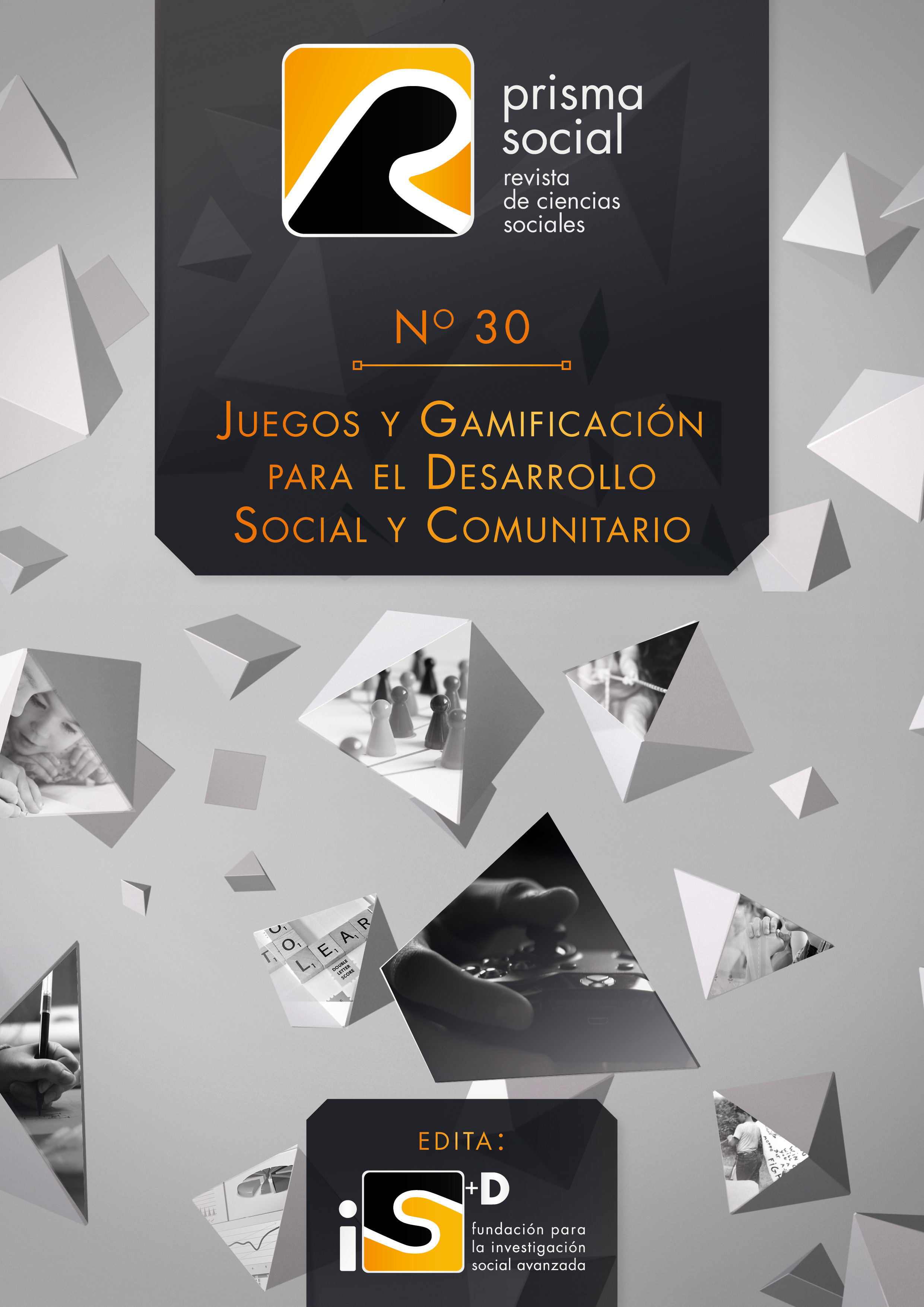




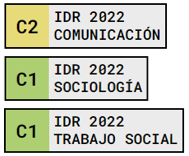

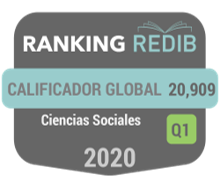
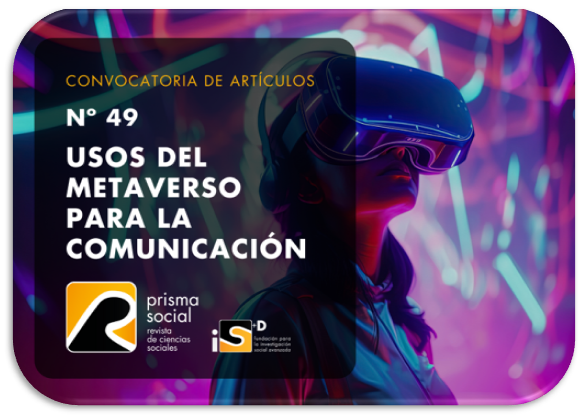
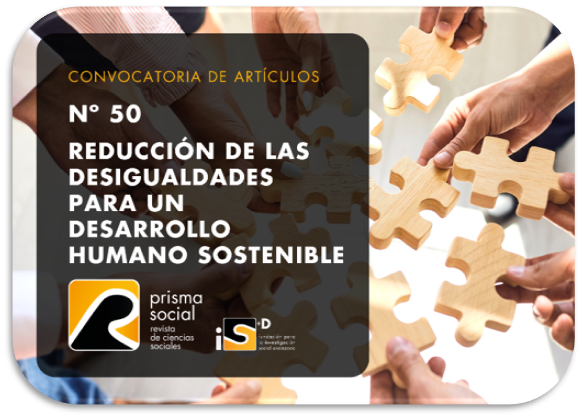












.png)




